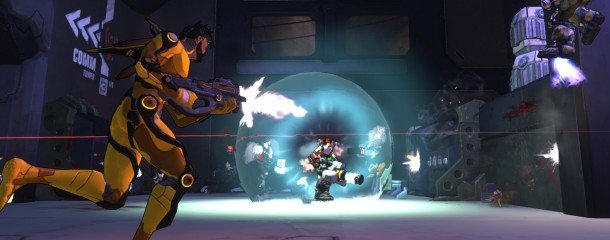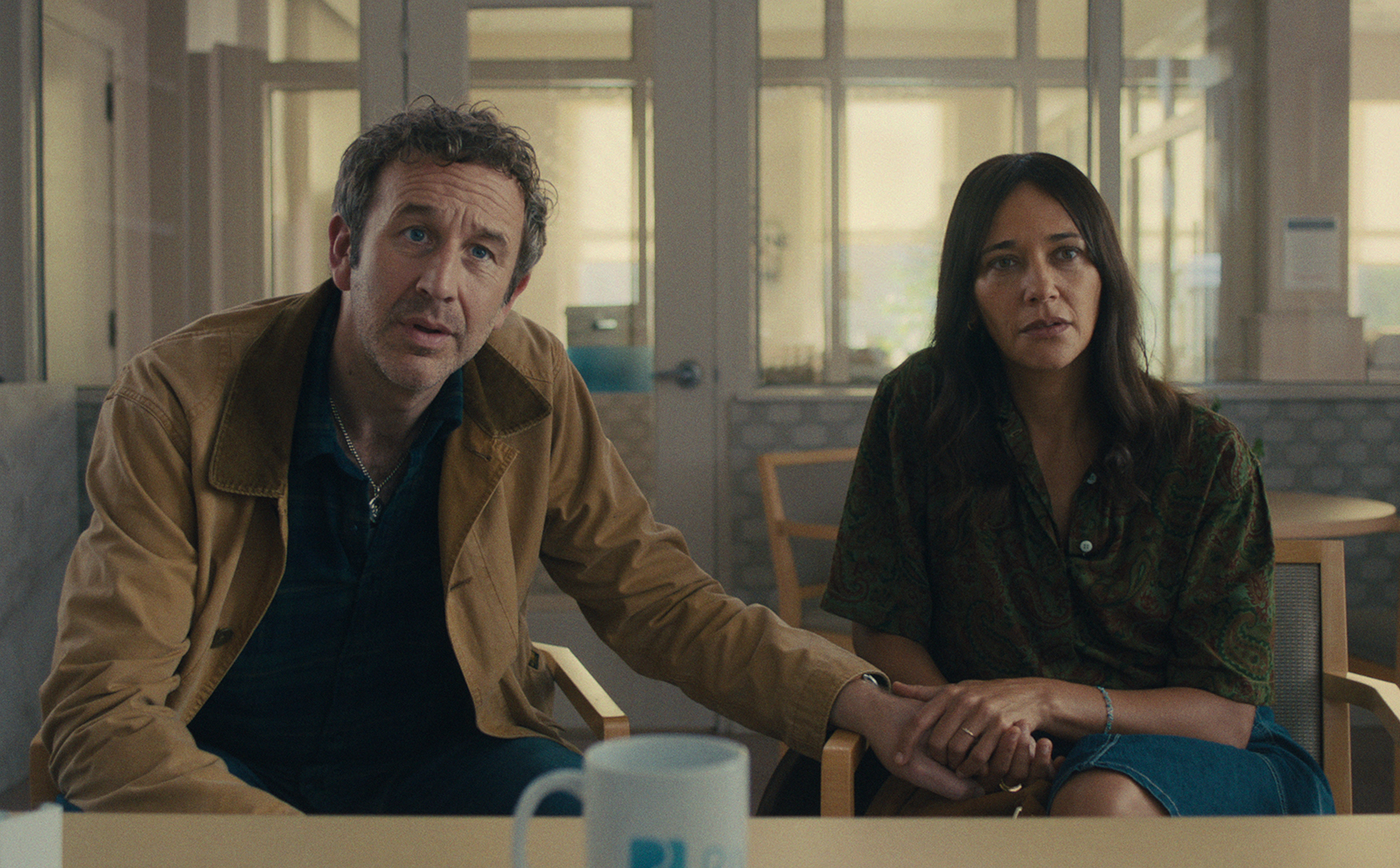Firefall e-sports toolkit revealed: Red 5's Morgan Romine on building the next big competitive shooter

Firefall devs Red 5 are rolling out support for the e-sports community with a toolkit that gives casters and commentators the power to broadcast live matches from any angle - and even slow down, rewind or pause games in progress.
The game's competitive PvP takes place in instanced arenas where teams compete in objective-based and deathmatch modes. Red 5 are taking the game's e-sports aspirations seriously - for them, it's a way to prove that their free-to-play shooter has real credibility while building an active and loyal community. In the exclusive video below, Red 5's e-sports maven Morgan Romine takes you through the new tools, including those for regular broadcasters and the special powers granted to dev-sanctioned community broadcasters.
We spoke to Morgan about Red 5's plans for e-sports, what makes a shooter work in the competitive arena, the importance of community, and their plans for GamesCom and beyond.
The latest patch seems to have really overhauled the game. How big a factor was e-sports in deciding to do that?
I think that a lot of the feedback that we got in the beta during the earlier phases really spoke to people's desire to see a higher skill level in the game. We have a lot of competitive players because we expressed that e-sports is a high priority for us. We're lucky to get a lot of beta testers who have some professional gaming experience or professional gaming aspirations that came into our beta and gave us a lot of feedback that was applicable to our own e-sports goals.
So we did make a lot of changes to things like combat speed, movement speed - it's a lot faster now than it was a year ago. A lot of the abilities that we've tweaked, as well as the battleframes that we've got - we did away with medic entirely and brought in the biotech instead - a lot of that was driven by ensuring that all of the different battleframes would be able to contribute something special to an e-sports environment. We want this to be a game that is balanced so that everybody can shift through whatever battleframes make sense in a given context and not just have it be predictable.
Certainly with the toolkit that we're coming out with, that's something that we've been talking about doing for a really long time so this patch is just our opportunity to finally implement it. We're really excited to finally be able to do that, because we do want to make sure that we're trying to cater to the desires of that community. We've seen in the past - and this is certainly something that I have experience with - where developers have not really provided nearly enough tools. I've always seen these opportunities for developers to provide tools for shoutcasters and for players to review replays in a much more detailed manner, to spectate live games and understand what's going on - particularly in FPSes.
The biggest gaming news, reviews and hardware deals
Keep up to date with the most important stories and the best deals, as picked by the PC Gamer team.
It's been a very difficult thing in the past - if you know Counter-Strike really well then you know what's going on but if you're not familiar with Counter-Strike in the first place then it's not that interesting to watch. We lose out as an e-sports community when we can't bring new people into the fold by showing them all the exciting stuff that's going on. I'm hoping that this toolkit is going to allow us to translate the excitement of what's going on to the spectators who are watching.
Counter-Strike's a really good example of an e-sport that is hard to follow if you don't know what's going on. I think that's true of shooters in general - unlike an isometric RTS or Dota, you're limited to the perspective of one person. How do you go about mitigating that?
Well, it's certainly a challenge! I'll say that in the beginning. We recognise that it's a challenge, but the simple goal is that we want this game to be an e-sport, we believe that it can be really entertaining to watch, and we believe that it's a way that we can bring more players into Firefall. So the question is, “how can we use e-sports and our elite competitive play to bring in more players?” The first thing is that they have to understand what's going on.
As you just said, with FPSes it's really hard because you can only watch from the perspective of one player at a given time. That's still going to be the majority of the gameplay that you're watching as a spectator, but one of the things that we've provided in the observer mode is the top-down view. So at any given time, kind of like if you're watching a basketball game or a soccer match, the broadcasters will show you the view of the field so you can see where all of the players are at a given time, which gives you the layout of where the action is, what momentum is driving the gameplay.
Being able to return to that regularly as a broadcaster or a spectator is really important because it gives you the overall picture. You can see this especially with objective-based game modes where if you have a flag, for example - we don't have capture the flag in the game right now - but I like to look to objective-based games as some of the best possible for e-sports because they have a narrative behind them. There's a story: there's this flag that you have to capture and you have to get it back to your base. If you have a top-down view it's way easier to see that because you can see where all the players are and you can see where the flag is. And if you know that the goal is to get that thing back to the base then the drama is there, the narrative is there and it's really easy to capture in that one screen. There have been other games that have sort of allowed you to do that but really I've always been surprised that that's not something that you've seen enabled by developers - it's normally mods that other people create to allow players to see what's going on in a match. I think we're going to continue to hone that because it's so important.
We also have - I'm calling it the action cam, but it's a kind of directed spectator. The program will identify through the code where the action is happening, where the firefights currently are and it'll direct your spectator to it. So you can even let it go on its own and it will follow the action, which is kind of cool too. Of course you can also pop out to any of the individual players, so if you know there's this sniper hanging out he's not going to be right in the middle of the action so you need to check in on him every once in a while, but you have control of all the different player commands and you can keybind them any way you want to.
There's going to be some broadcast skill, I think. The best broadcasters are going to be the ones who can figure out how to make the most of these tools, but we're trying to provide the tools to make that easy for them.
Next: Fostering a new generation of casters, the industry's growing support for e-sports, and the importance of community.
Joining in 2011, Chris made his start with PC Gamer turning beautiful trees into magazines, first as a writer and later as deputy editor. Once PCG's reluctant MMO champion , his discovery of Dota 2 in 2012 led him to much darker, stranger places. In 2015, Chris became the editor of PC Gamer Pro, overseeing our online coverage of competitive gaming and esports. He left in 2017, and can be now found making games and recording the Crate & Crowbar podcast.


